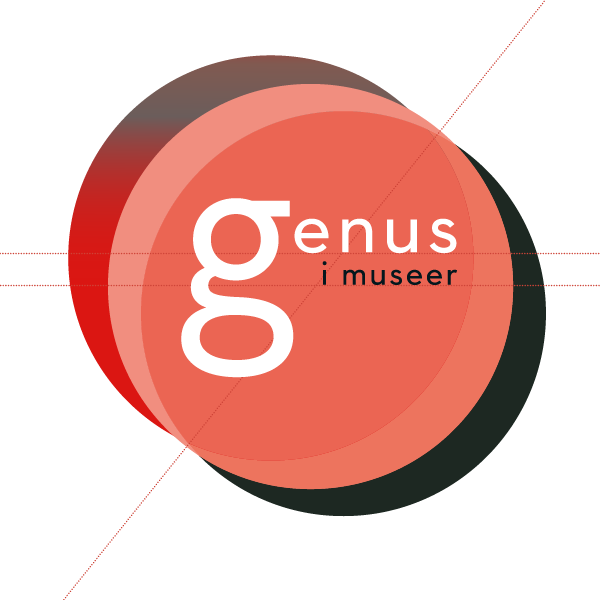Unruly Images
I am interested in the images that we live with.
The everyday images that sit in our kitchen cabinets.
Images that decorate our experience of home, city, or nation.
Images flickering on our television screens and mobile phones.
Images we have inherited and which can be recalled from memory.
Images that produce a symbolic landscape within which we try to relate to one another, and love.
Images that show and images that hide.
Images that get in the way.
Images that affect in different ways, depending on the viewer.
Specifically, I am interested in the ways these images restage or expose, or counteract history.
Let me give an example of what I mean; an example of the “punctum”, the ruptures, the temporal fissures that can open unexpectedly in the everyday.
The other Friday evening, I walked through central Malmö on my way to the station. As I passed by a pleasant looking flower shop, I was provoked by what I saw for sale outside. In the floral display there were cotton branches wrapped in brown paper that was printed with retro Swedish newspaper advertisements (See Fig.1). You might wonder why the branches were so disconcerting, after all they are plants and do not seem to obviously “speak” as images. But for me they were troubling, in that they immediately evoked slavery’s archive: the gnarled overworked hands of African-American cotton-pickers in the American South; the human cost and pain of industrialisation; sexual violence, punishment, and coercion; the racialisation of African people as labourers and then their stratification into “field” and “house” workers based on skin colour; not to mention all the other labourers involved in this burdensome work in India, West Africa, Brazil. The nostalgia being sold with this plant in Malmö (with allusions to the past emphasised by the gift paper), seemed to be at the expense of its significations. Significations ultimately marking power-over Black and Brown bodies. Sven Beckert’s book Empire of Cotton (2014) testifies to the fact that the history of cotton is indelibly tied (meshed) with enslavement and its legacies. So, what does it mean for these cotton buds to be included as a “natural” decorative motif for Swedish homes? What motivates participation in this kind of visual pleasure?
Speaking of pleasure and powerplay, my image-saga did not end in Mamö. The next day (a Saturday) I joined browsers in a Loppis market in Västra Götaland. There on the west coast, in a large barn with all sorts of old furniture, vinyl records and ceramicware, I was struck again by the familiar presence of racialised ornaments that you tend to find in these situations, particularly in the countryside (Fig.2). I have come to know these dusty knick-knacks very well. Smiling Chinese ceramic figures and broad-grinned Black entertainers. Sometimes you find hardcore racist memorabilia of the “Jim-Crow” kind; like demeaning caricatured money boxes that travelled as designs from the US to places like Sweden, where they were often repurposed as missionary collection boxes. But then there is all the crude and poorly made stuff, like wooden dolls of naked African women with large plated lips; then a whole plethora of tourist junk that we could call pseudo-exotica. These figures tend to stand out for several reasons. Because they are usually different in tone and style from other objects, and of course, because they often represent crude and downright enraging stereotypes of different ethnic groups. But there is also something uncanny about their isolation, the way they just sit there as a visual lie without any other context. A lie that sits in homes as an insufficient surrogate for authentic connection across cultures. A lie that distracts from humanity. If we think of a Loppis market as a view into habits of domestic collecting in a particular location, then what do these objects/images say about life behind closed doors?
All these questions I ask with sensitivity, knowing that truth-telling can so often hurt before it heals. But they are questions I think we need to address now (in the heat of global crisis), since they are ultimately concerned with welcoming’s, with well-being, with ethics, inclusion, and care.
Fig. 1 Cotton branches in Malmö, photographed by the author.
Fig. 2 Black musician ceramic in Loppis, photographed by the author.
Temi Odumosu is an art historian, curator, and lecturer in the School of Arts and Communication, at Malmö University in Sweden. She is the author of Africans in English Caricature 1769-1819: Black Jokes, White Humour published by Brepols (2017). Her international research and curatorial practice are concerned with the visual and affective politics of slavery and colonialism, Afro-Diaspora aesthetics, decolonial praxis and pedagogy, archival re-enactment(s), critical strategies for digitisation, and more broadly exploring how art mediates social transformation and healing. Recent curative interventions in Scandinavia include What Lies Unspoken: Sounding the colonial archive (National Gallery & Royal Library of Denmark, 2017-2018); Milk & Honey (Botkyrka Konsthall, Sweden, 2017); and Possession: Art, Power & Black Womanhood (New Shelter Plan, Denmark, 2014). Temi Odumosu’s research is currently funded by the Riksbanken Jubileumsfond.
Further reading:
Danbolt, Mathias. “Retro Racism: Colonial Ignorance and Racialized Affective Consumption in Danish Public Culture.” Nordic Journal of Migration Research 7.2 (2017): 105–113.
Habel, Ylva. “Say milk, say cheese: Inscribing public participation in the Swedish Milk Propaganda’s promotional photography.” History of Participatory Media: Politics and Publics, 1750-2000. Eds. Ekström, Anders et al. New York; London: Routledge, 2011. 98-111.
Kilomba, Grada. Plantation Memories: Episodes of Everyday Racism. Münster: Unrast Verlag, 2008.
Nyong’o, Tavia. “Racial Kitsch and Black Performance.” The Yale Journal of Criticism 15.2 (2002): 371-391.
Odumosu, Temi. “Open Images or Open Wounds? Colonial past and present in the city of Copenhagen.” Openness: Politics, Practices, Poetics. Ed. Kozel, Susan. Malmö: Living Archives Research Project, 2015. Published and archived online at: https://medium.com/the-politics-practices-and-poetics-of- openness/open-images-or-open-wounds-colonial-past-and-present-in-the-city-of-copenhagen- 66d901f5f4e1
Further media
Extract from documentary: Bergman, Sunny. “Our Colonial Hangover” (Margreet Ploegmakers for De Familie Film & TV, 2014) – https://youtu.be/LBLBxb29maw
Extract from documentary: Riggs, Marlon. “Ethnic Notions” (California Newsreel, 1987) – https://youtu.be/IHMo64KSApQ
Junot Diaz in conversation with Lotte Folke Kaarsholm at the International Author’s Stage (Royal Library, Copenhagen, 2017) – https://youtu.be/IC0UV3J2GKM



